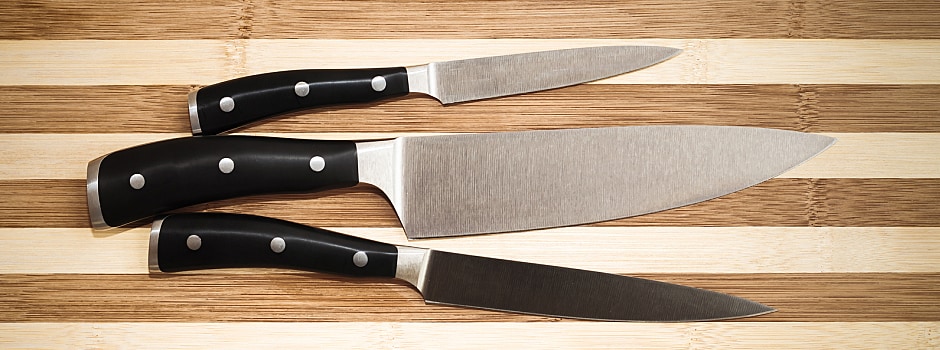When it comes to choosing professional knife sets, there are many variables to consider. Some chefs swear by knives from a particular country or brand, and others are all about scoring a blade forged in a certain style. However, ultimately, the most important factor when choosing a professional knife set is how the knives feel when you hold them. After all, your chef knife is the tool you'll use more than anything else, and it should feel like a natural extension of your hand.
That being said, it's important to understand the other variables that affect the uniqueness of different knife sets, including the hardness and toughness of the steel, price points, ease of maintenance (keeping it clean and sharp), shape, and style. Here are some important considerations to keep in mind.
Different Styles to Consider
Depending on your preference, you may opt for a Western-style chef knife, a santoku knife, or a gyutou, which is also known as a hybrid knife. Western-style knives are known for being heavy and thick, having sharp tips that are easy to maintain due to softer steel (but require frequent honing to do so), and sporting wide bolsters (the edge at the base of the blade that your fingers rest against).
You can find great professional knife sets from German makers like Wusthof, which makes the preferred Western-style chef knife of many industry experts, Messermeister, and J.A. Henckels, which offers several professional knife sets at attractive price points. Their Western-style chef knives can handle tough tasks such as butchering whole chickens and prepping stubborn vegetables. They're also ideal for the rocking-style of chopping that classically trained chefs use.
Santoku knives weigh less and allow for greater precision. While they're Japanese by origin, you'll find this style of knife produced by German, Swiss, and Scandinavian brands, in addition to Japanese makers like Misono, MAC, and Global. Santokus have a blockier tip and only a slight curvature to the blade, and are geared more toward chefs seeking perfect cuts rather than those looking to power through an extensive prep list in a short time. Simply put, you won't want to use a santoku for cutting through bones.
Gyutou knives are the latest popular style—particularly because they fall between santokus and Western-style chef knives. Known as "hybrid knives," they add more curve and heft to the blade than you'll find in santokus, but they weigh less than Western-style knives. If you can't decide between Western-style and santoku knives, try a gyutou for size because it may just be your happy medium.
Hardness vs. Toughness
The two main properties of knives that chefs must consider are the hardness and toughness of the steel. "Hardness" refers to a knife's ability to retain its edge over time. Superior chef knives are typically made of carbon steel, an alloy composed predominantly of iron with carbon and other metals (like vanadium and chromium) mixed in. The softer the steel, the more often the knife will need to be honed to maintain its sharpness. Japanese knives tend to be produced with harder steel, which makes them very sharp from the start. However, the downside is that these super-sharp knives lose their edge fast, can be very expensive, and can be a pain to maintain. Unless you know how to sharpen these blades, you risk damaging the tool you invested heavily in.
"Toughness" refers to a knife's ability to avoid cracking or chipping when forces are applied (a knife that lacks toughness can shatter when dropped). Unfortunately, these two factors are typically inversely proportional when it comes to most mass-produced professional knife sets, so in order to find knives that excel in both hardness and toughness, you'll have to spend more.
The Bottom Line
Once you decide on the style of knife you desire, and you determine a suitable price range for your investment, your best bet is to find a reliable knife store where you can test out the feel of different blades. Until you feel a knife in your hand, you won't know for sure whether it's right for you. You should also consider how often you'll need to maintain the edges of your blades and how you'll have to clean them. Some knives require a lot more attention than others and must be cleaned and wiped dry immediately after use to avoid damage and rust. So whichever knives you choose, be careful and master how to care for your blades properly.
Related Articles

How to Find the Right Chef Job and Kitchen for You
Here are some helpful tips from a successful chef on how to choose the right chef job and find the best type of kitchen for you.

Chef Skills: How to Overcome Your Achilles' Heel
In terms of your chef skills, there are ways to move past your shortcomings. Here are some tips to help.

Becoming a Chef: How to Get Started
Becoming a chef is not a decision to make on a whim. Here are some helpful tips and considerations to keep in mind before you commit.



